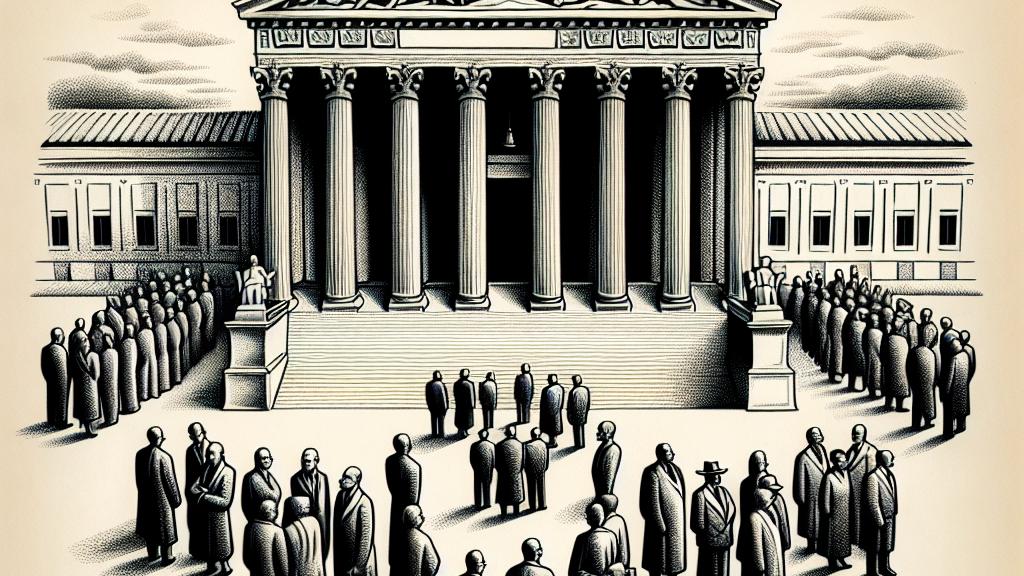Exploring Rhetoric in Supreme Court Opinions and Its Impacts
Overview
- Supreme Court justices artfully utilize rhetoric to bolster their legitimacy and authority.
- The 'monologic voice' unveils a shift in tone between majority and dissenting opinions, reflecting diverse judicial philosophies.
- Public approval significantly impacts the Court's legitimacy, shaping its influence and societal role.

Unpacking the Monologic Voice in Supreme Court Judgments
In the realm of American law, the Supreme Court stands as the ultimate judicial authority, affecting countless lives through its landmark decisions. A recent and insightful study by Cornell University delves into the concept of the 'monologic voice.' This rhetorical style is not merely a way of speaking; it's a powerful tool that justices wield to assert their authority and legitimacy. Think of it like a spotlight, shining on the Court’s role in democracy. Majority opinions, for instance, often exude a collective tone, uniting justices in shared purpose, as seen in pivotal cases like Obergefell v. Hodges, where they reinforced the court's support for marriage equality. In contrast, dissenting voices, like Justice Ruth Bader Ginsburg's emphatic stand in Shelby County v. Holder, often resonate with individualistic tones, showcasing personal philosophies and differing interpretations of the law. Through examining over 15,000 Supreme Court decisions from 1946 to 2022, researchers revealed that while writing styles evolve, the core mission remains unwavering: to fortify the Court’s legitimacy in the eyes of the public.
Contrasting Rhetorical Styles: Rehnquist vs. Roberts Court
Peering into history, the contrast between the Rehnquist and Roberts courts is striking and telling. The Rehnquist era thrived on collective language, where justices often harnessed the power of unanimity. They presented a strong front, emphasizing institutional integrity in decisions like United States v. Lopez, which solidified their stance on federalism. Fast forward to today, and the Roberts court depicts a stark shift. It embraces a more personalized approach, where individualistic tones dominate opinions, such as in the landmark case of Dobbs v. Jackson, showcasing a divergence among justices. This transformation illustrates not just changing attitudes but also the Court's adaptation to today’s highly polarized political landscape. The current justices grapple with publicly navigating their ideologies while presenting them in ways that resonate with an increasingly skeptical populace. This intricate dance reflects a profound awareness of the need to maintain credibility and relevance.
The Powerful Influence of Public Perception on Judicial Legitimacy
Public opinion is more than just background noise; it plays a pivotal role in shaping the legitimacy of the Supreme Court. Research shows that as public approval fluctuates, so does the perception of the Court’s authority. A vivid example is the uproar following the overturning of Roe v. Wade—this not only sparked outrage but also raised questions about the Court's disconnect with public sentiment. Justices must constantly navigate the stormy waters of public approval. When they manage to align their rulings with societal values, they cultivate trust and reinforce their authority; in contrast, lapses in approval can lead to diminished legitimacy, as seen historically during contentious periods. The interplay between public sentiment and judicial decisions isn’t just crucial; it’s the lifeblood of maintaining the Court's influence over policy. As they tackle pressing issues, from voting rights to healthcare, the need for justices to engage with public perception becomes essential—not simply for maintaining their authority but for ensuring that their impact resonates with the very society they serve.

Loading...